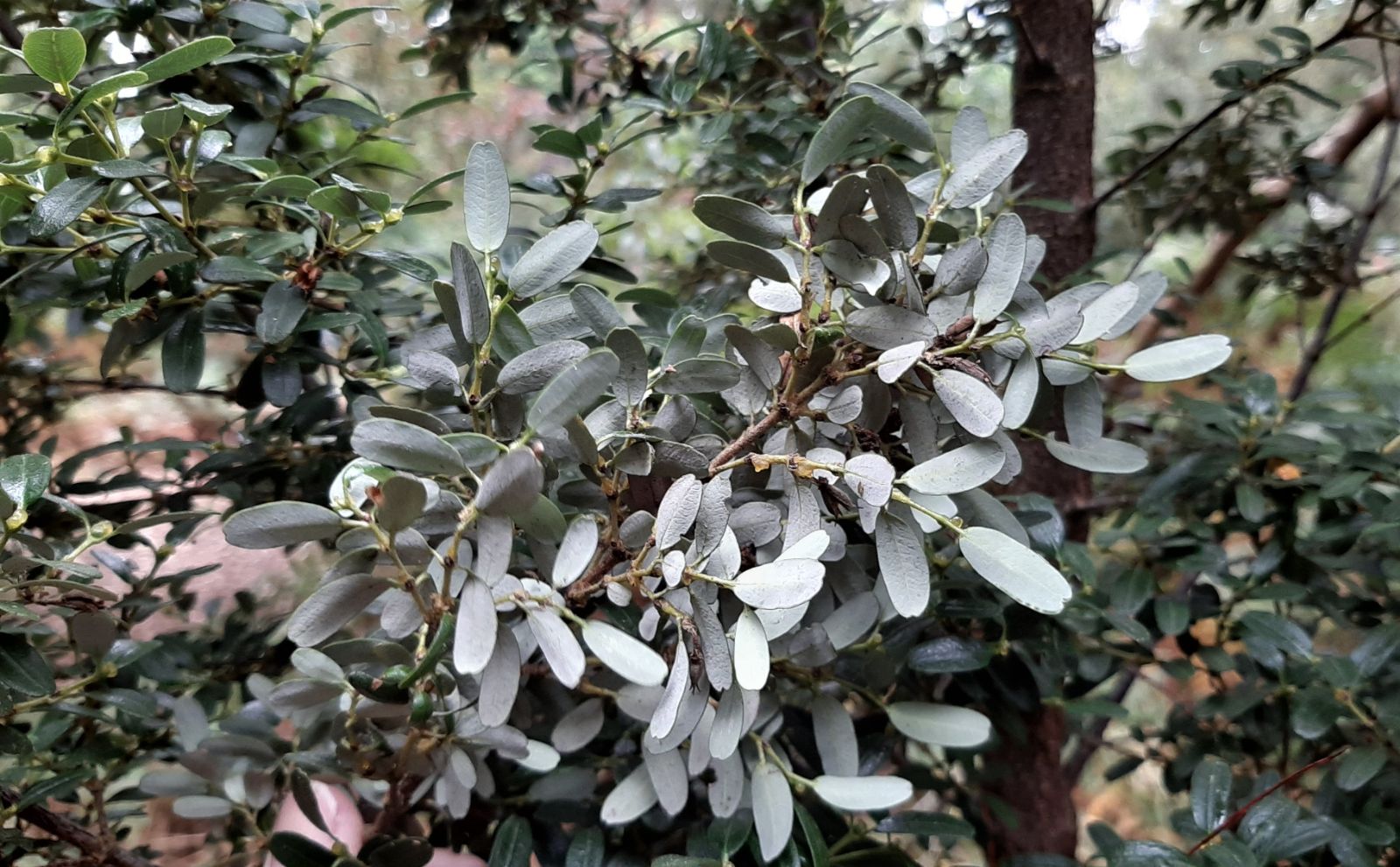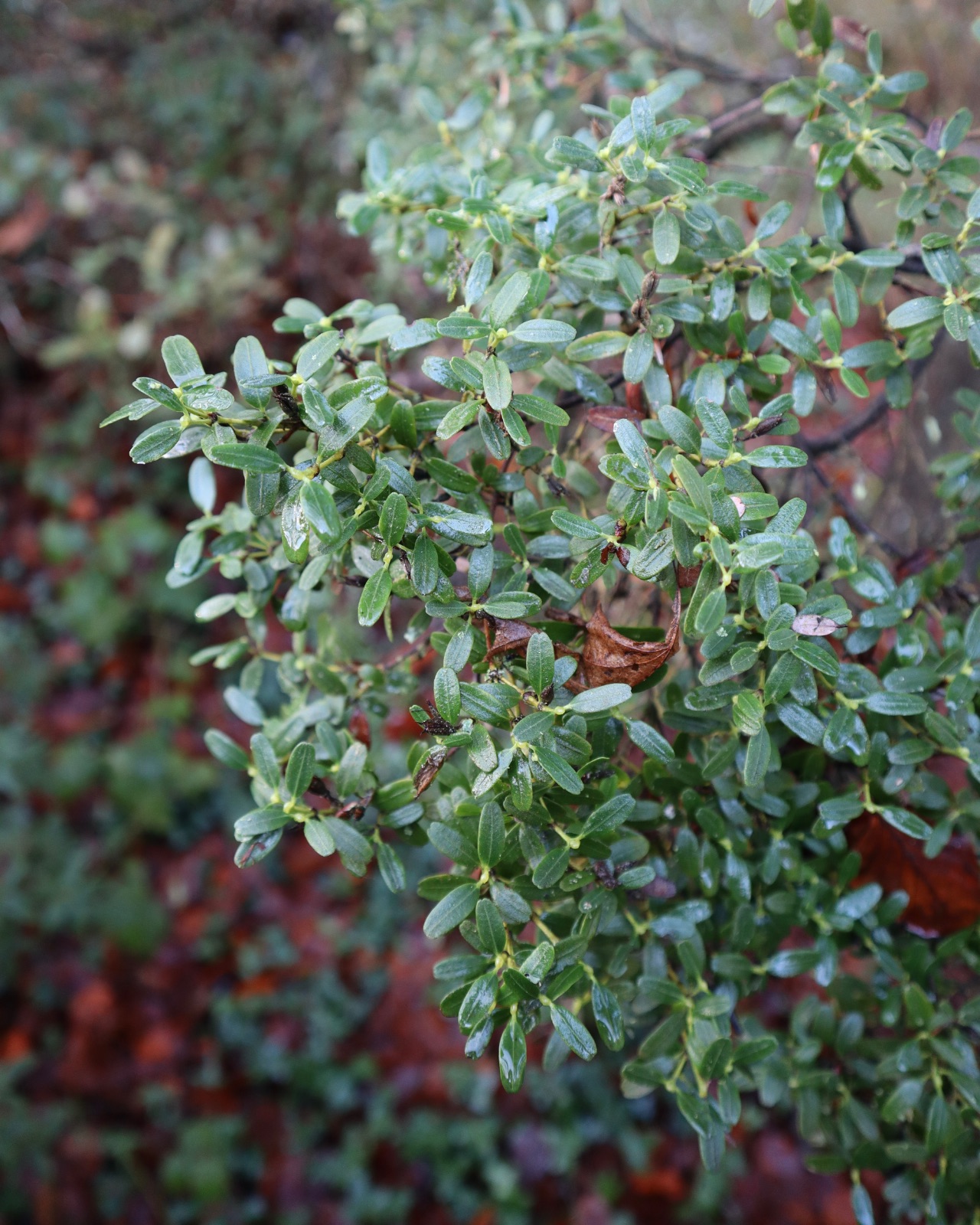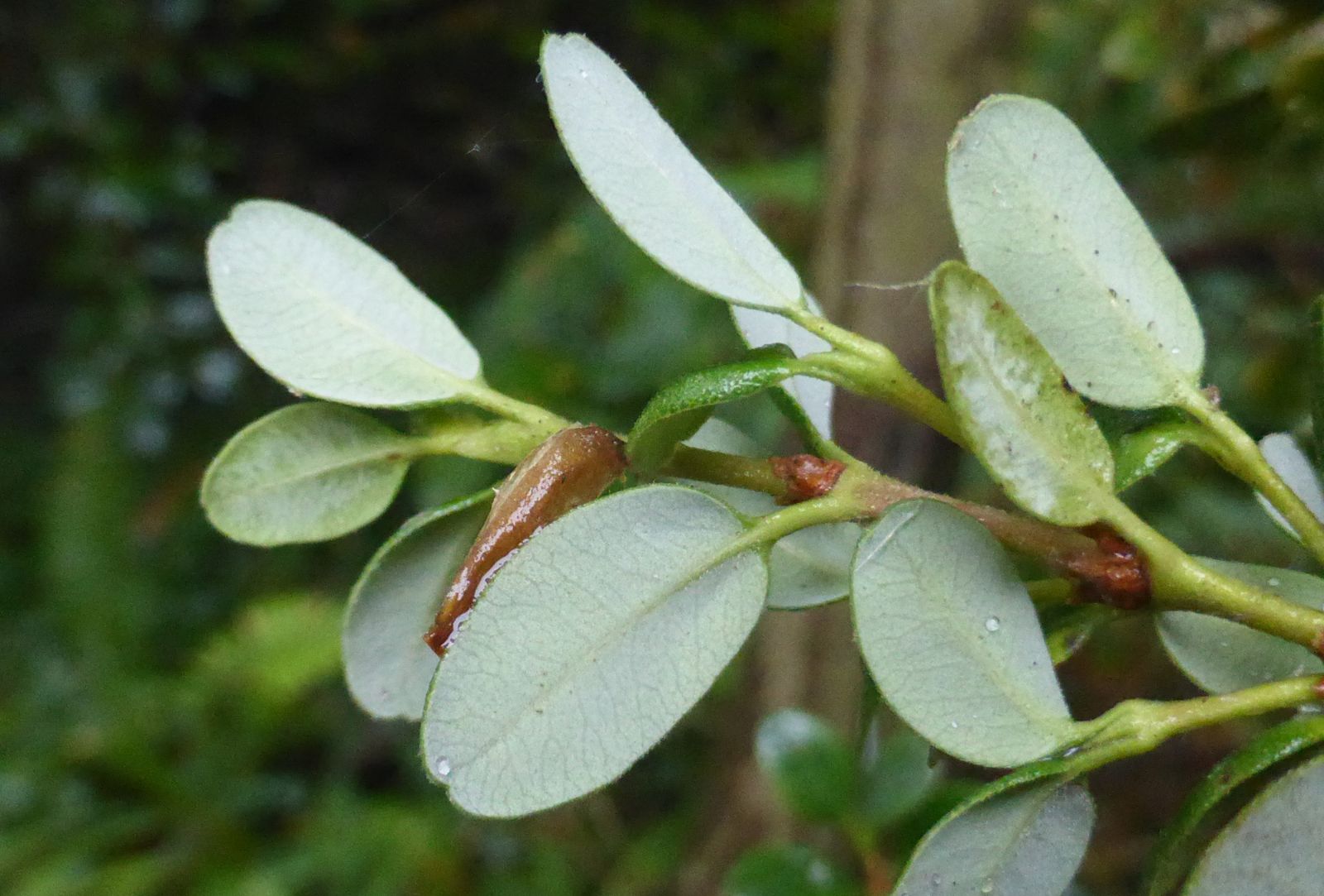Eucryphia milliganii
Sponsor
Kindly sponsored by
William & Griselda Kerr
Credits
John Grimshaw, Ross Bayton & Tom Christian (2021)
Recommended citation
Grimshaw, J., Bayton, R. & Christian, T. (2021), 'Eucryphia milliganii' from the website Trees and Shrubs Online (treesandshrubsonline.
Genus
Common Names
- Dwarf Leatherwood
Shrub or tree to 14 m, rather densely branched and with a columnar habit. Bark smooth and blackish brown. Branchlets light brown, terete to ridged, glabrous to pubescent and resinous. Buds sticky. Leaves evergreen and leathery, opposite and crowded, simple, 0.4–1.4 × 0.2–0.6 cm, elliptic to oblong, upper surface dark green and glossy, lower surface glaucous and glabrous, venation conspicuous on both surfaces, five to seven secondary veins on each side of the midvein, margins entire, apex strongly emarginate; petiole to 0.2 cm long, glabrous; stipules ovate, blackish brown, to 0.1 cm long. Monoecious; flowers hermaphrodite, pedicellate, solitary and axillary, subtended by brown bracts; petals white, to 0.8 cm long. Fruit a dark brown woody or leathery capsule to 1 cm long, with four to five valves; each valve holding one to two winged seeds. Flowering January to May, fruiting March to July (Australia). (Bausch 1938; Dress 1956).
Two subspecies are recognised: subsp. milliganii from northern Tasmania, with glabrous leaf undersides, and subsp. pubescens, from southern Tasmania, with pubescent leaf undersides.
Distribution Australia Tasmania
Habitat To 1050 m asl
USDA Hardiness Zone 8
RHS Hardiness Rating H5
Conservation status Not evaluated (NE)
Taxonomic note The two Tasmanian species, E. milliganii and E. lucida, are closely related and readily form hybrids (Eucryphia × hybrida) in the wild (Bausch 1938). Both are found in horticulture. Some authors have considered E. milliganii to be merely a stunted, alpine form of E. lucida, (Bausch 1938; Dress 1956), but the distinctions are quite clear.
Eucryphia milliganii subsp. milliganii was introduced to British cultivation by Harold Comber in 1929 but received only an undeservedly short note from Bean (1981). It is a most attractive small tree, forming a column of dense small dark leaves sprinkled over with the pure white flowers, perhaps more resembling a myrtle than other eucryphias. There is an exceptionally fine example at Logan House (adjacent to Logan Botanic Garden) in Scotland, which stood approximately 9 m tall in 2006 (dbh 32 cm) and 11 m tall in 2019 (dbh 44 cm) (Tree Register 2019). TROBI records a scattering of good specimens along the western fringes of the UK, although curiously none from the island of Ireland, but it also grows well away from the mildest areas for example at the Sir Harold Hillier Gardens, Hampshire, and in a private collection in west Oxfordshire (Tree Register 2019). A cool site with abundant moisture and soil that is more or less lime-free seem to be important. Its frost tolerance is not known, but –10ºC is suggested as a limit for the closely related E. lucida (Hogan 2008). It seems to be rare in Europe, and also in the United States although it is in cultivation in the western states, where it should do well in milder coastal areas.
It is available in the nursery trade and continues to be collected by teams from major botanical institutions in the northern hemisphere, for example by staff from Bedgebury National Pinetum, UK, who collected it in 2004 under the number DTAZ 45. Young plants from this collection are establishing at Bedgebury and at a handful of collaborating collections, for example at Benmore Botanic Garden in Argyll where they have been planted in the Tasmanian area (pers. obs.).
The species was described by Joseph Hooker based on specimens collected by Scotsman Joseph Milligan (1807–1884), Surgeon Superintendent to the Van Diemens Land Company (S. O’Brien pers. comm. 2018).
subsp. pubescens R.W. Barnes, G.J. Jordan, R.S. Hill & C.J. McCoull
This subspecies differs from typical E. milliganii in having ovate leaves with a pubescent underside, a dense fringe of trichomes on the leaf margins, and white or pink flowers (Barnes et al. 2000).
Distribution
- Australia – southern Tasmania
RHS Hardiness Rating: H5
USDA Hardiness Zone: 8
The broader leaves with their hairy undersides make this taxon easily distinguishable from subsp. milliganii. It is represented in cultivation by the clone ‘Pink Whisper’, discovered by Alan Gray and Ken Gillanders in Tasmania in 1976, which has pale pink flowers (Coombes 2007). This clone has also been attributed to E. × hybrida (Seaforde Gardens 2007). Cuttings of ‘Pink Whisper’ were brought home from Australia by Sir Harold Hillier in 1977, but it remains rare. There is a 4 m specimen at the Hillier Gardens, and it is commercially available in the United Kingdom.





